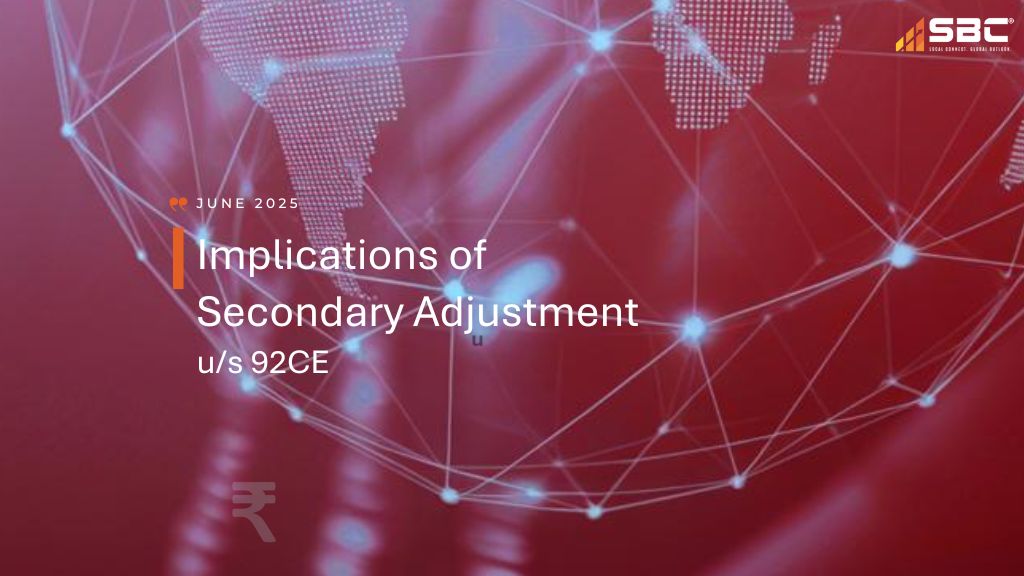Transfer Pricing Insights: A Deep Dive into Inter-Company Agreements (ICAs)
Home > Transfer Pricing Insights: A Deep Dive into Inter-Company Agreements (ICAs)

October 8, 2024
Inter-company agreements (ICAs) serve as crucial legal documents governing transactions within Multinational Enterprise (MNE) groups. These agreements delineate rights and obligations for various intra-group arrangements of the MNE, including the exchange of goods, services, loans, and intellectual property.
Before delving into the significance of ICAs in the broader tax andlegal landscape, it is essential to dive into the roots and obtain an understanding of their fundamental nature. Unlike Transfer Pricing (TP) policies, which establish pricing guidelines for inter-company transactions, ICAs provide the contractual framework for implementing these policies. While TP policies ensure transactions take place at arm’s length, ICAs serve as the practical application of these principles, guiding the parties involved in adhering to tax and regulatory requirements and mitigating potential disputes.
With this understanding, let’s explore the critical checkpoints for drafting ICAs and delve into best practices for their effective implementation within MNE groups.
A. Important Checkpoints while Drafting/Reviewing an ICA
ICAs are not standardized and vary based on the underlying inter-company transactions, roles and responsibilities, and various key terms. Providing general guidance on how ICAs are to be drafted may not encompass all exhaustive scenarios. Therefore, it is prudent to highlight key checkpoints or questions that must be addressed during the drafting of any ICA. With this context in mind, the key checkpoints are encapsulated as follows:
Context:
Do the ICAs accurately delineate the actual inter-company transaction that is taking place?
Transparency:
Do the ICAs clearly outline the relevant background and roles & responsibilities of the parties to the agreement?
Timelines:
Is the timing of drafting and execution of ICAs, including tenure and termination clauses, appropriately documented?
Specificity:
Is the description and scope of ICAs taken care of as it is the heart of the ICA?
Benchmarks:
Are pricing policies aligned with TP policies, benchmarking studies, comparability analyses, and litigation experience?
Credit Evaluation:
Is the credit period evaluated to avoid the risk of deemed loans and imputed interest from delayed payments
Intangible Rights:
In alignment with the roles & responsibilities of the parties involved, are the relative risks properly documented and highlighted?
Critical Conditions:
Given recent experiences like the COVID-19 pandemic, is including a force majeure clause in ICAs essential for unforeseen circumstances?
TP adjustments:
Is there adequate coverage for true-up/true-down adjustments to ensure adherence to TP policy during periodic reviews or prior to financial closures?
B. Best Practices for ICAs
01 Clarity
ICAs must be clear, unambiguous, legally binding, and duly executed (signed and dated) by the authorized signatories of the parties to the agreement.
02 Review
ICAs should undergo regular review and updates to stay aligned with changing business practices, pricing policies, roles, responsibilities, and tax regulations.
03 Support
ICAs must align with MNEs’ transfer pricing policies and corporate tax strategies, covering indirect taxes (VAT/GST, customs) and key considerations like WHT, GAAR, POEM, and PE risks.
04 Controls
MNEs should ensure dedicated personnel manage ICAs, conduct regular audits for TP compliance, prevent adjustments without ICAs, and review ICAs before submission to tax authorities.
05 Expertise
Drafting ICAs requires expertise in the TP life cycle—planning, monitoring, compliance, and controversy management—along with tax, regulatory insights, and thorough legal review. Proper care is needed in choosing the preparer.
06 Explanation
The professional drafting ICAs needs thorough checklists, while MNE teams must clearly explain business objectives, roles, and key considerations.
07 Simplicity
Simplicity is key when drafting ICAs. Clear, straightforward agreements help avoid complexity and misinterpretation
08 3ʳᵈ Party ICA:
MNEs should ensure dedicated personnel manage ICAs, conduct regular audits for TP compliance, prevent adjustments without ICAs, and review ICAs before submission to tax authorities.
C. Key Take Aways for ICAs
• Alignment Importance:
Firstly, if the ICAs are not in place or not aligned to support the TP policies and tax positions of the MNEs, tax authorities may be compelled to draw their own conclusions regarding the nature and key terms of the inter-company transactions.
• Strategic Tool:
Further, ICAs should not be perceived merely as supporting TP documentation to be filed with tax authorities upon request but must be considered integral tax strategic tool to guide and monitor intra-company transactions and to support and defend the TP and tax positions of the MNEs.
• Evidential Value:
ICAs are vital evidence for determining transfer pricing, corporate tax, withholding tax, permanent establishment, place of effective management, GAAR, indirect taxes (VAT/GST, customs), statutory audit documentation, and cross-border regulations.
• Risk Awareness:
It is crucial to bear in mind that there have been numerous instances of tax rulings/decisions across major TP jurisdictions wherein defects in the ICAs have led to significant adverse TP consequences for taxpayers.
• Proactive Approach:
In conclusion, well-documented ICAs are essential for TP monitoring, compliance, and controversy management, helping MNEs avoid fines, save time during audits, and mitigate reputational damage.
Verify Email
Verify your email address below to download the PDF
CONTACT US
RELATED POSTS
-
 24 Sep 2025Transfer Pricing (TP) Compliance Developments in Mauritius - Finance Act 2025
24 Sep 2025Transfer Pricing (TP) Compliance Developments in Mauritius - Finance Act 2025 -
 24 Sep 2025360° Fixed Asset Management
24 Sep 2025360° Fixed Asset Management -
 20 Jun 2025Implications of Secondary Adjustment u/s 92CE
20 Jun 2025Implications of Secondary Adjustment u/s 92CE -
 16 Jun 2025Transfer Pricing Assessment Procedure
16 Jun 2025Transfer Pricing Assessment Procedure -
 31 May 2025ITAT Delhi Ruling on Treaty Abuse Allegation and DTAA Benefits
31 May 2025ITAT Delhi Ruling on Treaty Abuse Allegation and DTAA Benefits



